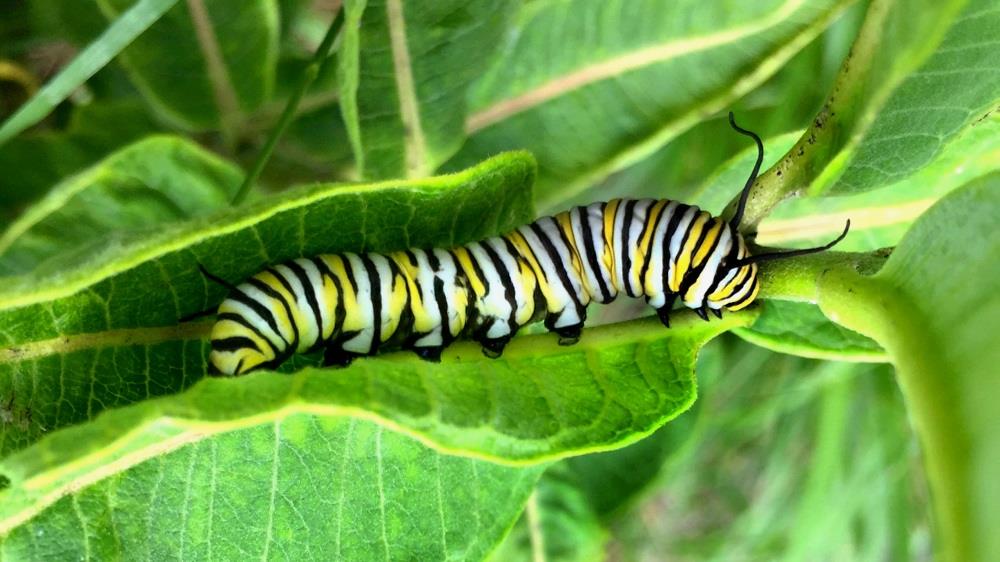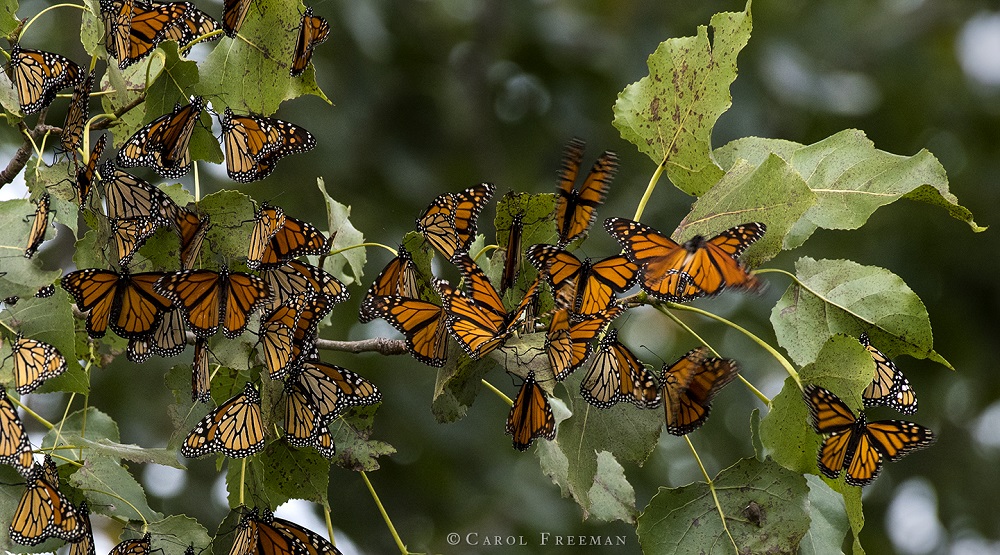Threats to Monarch Butterflies
You may have heard that monarch butterflies are in danger. Since the 1990s, the monarch population has declined by 90 percent. While the numbers have been increasing the past few years, the numbers have fluctuated from year to year, indicating a vulnerable population.
The main contributing factors to this rapid decline are the increases in habitat loss, pesticide use and climate change.
Monarchs are special in that the caterpillars feed exclusively on a plant known as milkweed. In order for monarchs to reproduce, milkweed has to be present for adults to lay their eggs on so the caterpillars can survive. Expanded urbanization and farming have meant the destruction of areas where milkweed was historically present. On top of that, the increased use of pesticides in land management strategies has meant that milkweed is more effect ively kept out of areas where it is "undesirable," such as in agricultural fields and along roadsides. Climate change has caused increases in extreme weather events such droughts in the summer and changes in flowering patterns that monarchs rely on to make the annual 2,000+ mile migration from Mexico to Canada.
ively kept out of areas where it is "undesirable," such as in agricultural fields and along roadsides. Climate change has caused increases in extreme weather events such droughts in the summer and changes in flowering patterns that monarchs rely on to make the annual 2,000+ mile migration from Mexico to Canada.
Habitat Range
Monarchs are one of few insects that migrate. Their range stretches from central Mexico to southern Canada. The monarchs we see in Glenview are part of the eastern population which is separated from the western population by the Rocky Mountains. For the eastern population, adult monarchs breed in southern Canada, the Great Lakes region, and the Northeast and Southeast states in the summer. In the winter they fly south to the oyamel fir forests of the Sierra Madre Mountains in Mexico.
The migration relies on successive generations every year to be completed. While one generation makes the journey back south for the winter and starts the journey north again in the spring, there are multiple generations born in the summer that never make this trip, but they are vital in continuing the species.
Importance of Monarch Habitat in Glenview
While monarchs can fly as far north as Canada, some of them stop farther south. Since Glenview is in the migration path, some monarchs stop here to reproduce. Because of this, the Village of Glenview has made a Monarch Conservation Plan. The plan further explains the threats to monarchs, importance of Glenview as monarch habitat, and what the Village is doing to protect monarchs on Village property.
The Village of Glenview has completed numerous projects designed to improve monarch habitat. Pollinator gardens have been created at central locations including Village Hall and the downtown train station, as well as on landscaped medians along Patriot Boulevard and Chestnut Avenue. Milkweed and other native plants have been seeded and maintained at open spaces such as Techny Basin, Gallery Park, Air Station Prairie, and the downtown West Fork Riverwalk. These areas are part of a regional network of habitats that monarchs rely on during migration and throughout the summer. The Village has also engaged in public outreach through boy scout projects and farmers market Green Tables. Additional projects are still in progress, such as a new pollinator garden at the streambank stabilization site on Pine Street. The Village welcomes volunteer helpers on many of these projects, so keep an eye out for future communications!
While the Village is continually working to increase and improve monarch habitat on Village owned land, anywhere with space is a great place to introduce habitat, including your backyard!


Monarch caterpillar eating milkweed Native nectar plants in Techny Basin

Monarchs roosting at the Kent Fuller Air Station Prairie in Glenview. © Carol Freeman
What can you do?
If you are a property owner, you can increase monarch habitat. Make a butterfly garden!
While monarch caterpillars rely on milkweed to eat, adult monarch butterflies can eat nectar from many different flowers. Therefore, it is important to provide many types of nectar plants other than just milkweed to fully support monarchs as well as other pollinators like hummingbirds, bees and other butterflies. While being functional, these gardens can also be very beautiful and take many shapes and forms depending on which flowers you decide to use. The Field Museum has great guides on what to plant in a butterfly garden and how to plant a native butterfly garden.
Consider certifying your property as a wildlife and native plant habitat through Conservation @ Home or the National Wildlife Federation, or as a Monarch Waystation! This certification shows your community that you are dedicated to providing space for the other critters with which we share our neighborhoods.
All photos used with permission
